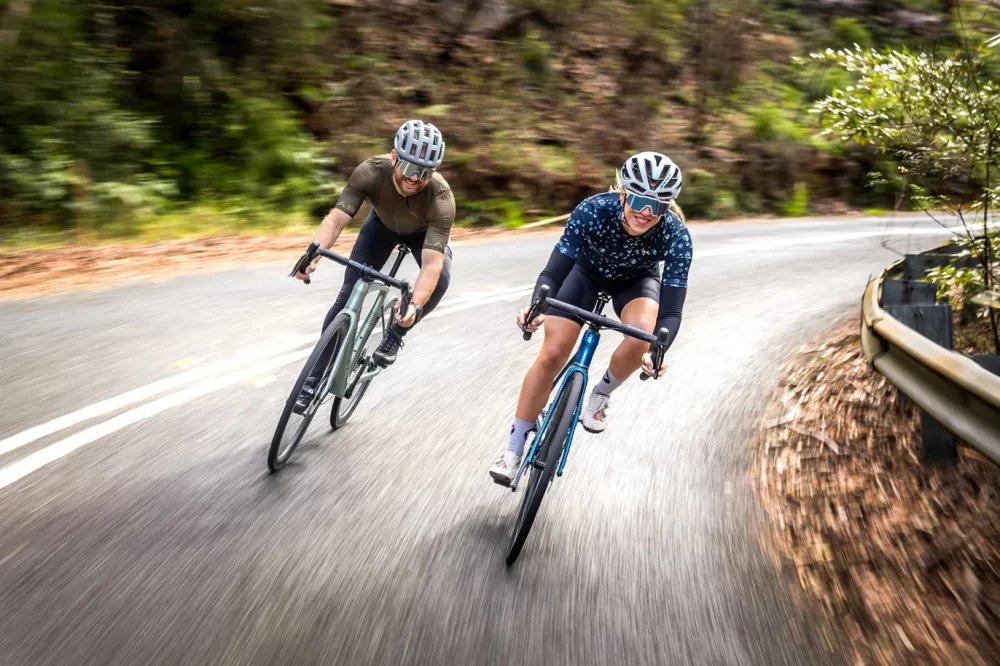
Unleashing the Power of the Best Bikes for Cycling on Rocky Roads
As someone who has spent countless hours riding my bike through rugged, rocky roads, I can tell you one thing: it's not for the faint of heart. Rocky terrains can challenge even the most experienced cyclists, but with the right bike, you can make your experience smoother and more enjoyable. In this guide, I'll walk you through everything you need to know about the best bikes for cycling on rocky roads, including the features to look for, the types of bikes that excel in these conditions, and how to ensure your bike is ready for those tough trails.

Mike's Bikes of Berkeley
1824 University Ave, Berkeley, CA 94703, USA
Why Rocky Roads Require Specialized Bikes
Cycling on rocky roads isn’t like cruising down a smooth highway. The rough terrain, loose gravel, and unpredictable obstacles make it a much more demanding experience. If you're not riding the right bike, you’ll quickly find yourself struggling with discomfort and even risking damage to your bike. So, what makes a bike ideal for rocky roads? Let’s break it down.

Mike's Bikes of Berkeley
1824 University Ave, Berkeley, CA 94703, USA
Durability and Strength
When riding over rocky surfaces, your bike needs to be durable enough to handle the constant pounding and impact. Mountain bikes, for instance, are designed specifically to withstand harsh environments. These bikes are built with stronger frames and components that can absorb shocks and resist wear and tear, making them the perfect companion for rocky roads.
Wide Tires for Better Traction
One of the key elements to consider is tire width. Narrow tires might work fine on smooth, paved roads, but when it comes to rocky paths, wider tires offer better traction. The larger surface area helps grip the uneven surface, reducing the chances of slipping or getting stuck on loose rocks. I remember my first ride on a rocky trail with narrow tires – I was slipping all over the place, feeling every bump as if my body was taking the impact directly. Since switching to wider tires, my ride has become far more stable and comfortable.
Suspension for Comfort and Control
Rough terrain can quickly become uncomfortable if your bike doesn’t have the right suspension system. A good suspension helps absorb shocks from rocks, roots, and other obstacles, giving you better control and making the ride much more enjoyable. Full-suspension mountain bikes are ideal for rocky trails, as they feature both front and rear suspension, allowing you to glide over bumps with ease. However, if you're primarily riding on moderately rocky roads, a hardtail bike with just front suspension could also do the job.
Types of Bikes for Rocky Roads
Now that we know the key features to look for, let’s dive into the specific types of bikes that perform well on rocky roads.
Mountain Bikes
When it comes to rocky terrain, mountain bikes are the go-to choice for most cyclists. These bikes are equipped with wide tires, durable frames, and excellent suspension systems, making them ideal for rocky roads. Mountain bikes come in several varieties, including cross-country, trail, all-mountain, and enduro bikes. The right choice depends on how rough the roads are and how much technical skill you have as a rider.
Gravel Bikes
If you're cycling on gravel roads or paths that aren’t as rugged as full-fledged mountain trails, a gravel bike could be a great choice. These bikes are designed for mixed terrain, offering a balance between speed and stability. Gravel bikes feature wider tires than road bikes, but they’re lighter and more efficient on smoother paths than mountain bikes. I personally love taking my gravel bike out on rocky but not too technical trails—it’s fast, yet offers enough comfort and stability for the rocks.
Fat Bikes
For those who love exploring really rocky or even sandy trails, fat bikes are a great option. These bikes feature oversized tires that allow you to ride over obstacles like a pro. The wide tires are excellent at absorbing shocks and providing extra grip, which is perfect for loose gravel or soft earth. If you find yourself often riding on extremely rocky roads with loose surfaces, a fat bike will help you maintain balance and control while adding a lot of fun to your adventure.
Features to Look for When Choosing a Bike for Rocky Roads
Choosing the right bike for rocky roads is all about selecting the features that will keep you safe and comfortable while enhancing your performance. Here are some important considerations when picking out your bike:
Frame Material
The frame of your bike plays a big role in how well it handles rocky terrain. Aluminum frames are lightweight and durable, making them great for rocky roads. Carbon fiber frames are even lighter and more shock-absorbing but can be pricier. Steel frames are known for their strength and can handle rough terrain well, but they are heavier than aluminum and carbon fiber. When riding rocky roads, I recommend opting for a frame material that balances weight and durability.
Brakes
Disc brakes are essential for cycling on rocky roads. These brakes provide excellent stopping power, especially in wet or muddy conditions, and are less affected by the terrain than rim brakes. Hydraulic disc brakes offer even better stopping power and are a favorite for riders tackling more technical trails. If you're planning to ride on steep, rocky roads, strong and reliable brakes will make all the difference in your safety.
Gearing
Riding on rocky terrain requires frequent shifting to adjust to the varying slopes and obstacles. A wide range of gears allows you to easily tackle steep inclines and rocky paths without burning out your legs. I’ve found that bikes with a 1x drivetrain (one front chainring) and a wide rear cassette are perfect for rocky roads, offering enough gear options while keeping things simple.
My Personal Story: A Rocky Road Adventure
Let me take you back to a day when I was riding a trail in the mountains, one that I had always wanted to conquer. The rocky road stretched ahead, lined with jagged stones and sharp inclines. I was riding a budget bike that wasn’t built for rough terrain, and within the first few miles, I knew it was a mistake. My hands were numb from the shocks, and I kept slipping on the loose gravel. The bike’s lack of suspension and narrow tires made it nearly impossible to maintain control, and I found myself walking my bike up steep sections more than riding it.
Fast forward to today, and I’m cruising through rocky roads with ease, all thanks to the proper bike. I now ride a full-suspension mountain bike with wide tires and hydraulic disc brakes. The difference is night and day—I can ride for hours without feeling fatigued, and I have complete confidence in my bike’s ability to handle whatever the terrain throws at me. It was a learning experience, but I’m glad I invested in the right bike for the job.
Preparing Your Bike for Rocky Roads
Once you’ve chosen the perfect bike for rocky roads, it’s time to prepare it for the adventure ahead. Make sure your bike is well-maintained, with properly inflated tires and working brakes. It’s also important to check your suspension and drivetrain to ensure they’re in good condition. A pre-ride inspection can save you from unexpected issues on the trail, and keeping your bike clean and lubed will ensure smooth performance on rocky roads.










